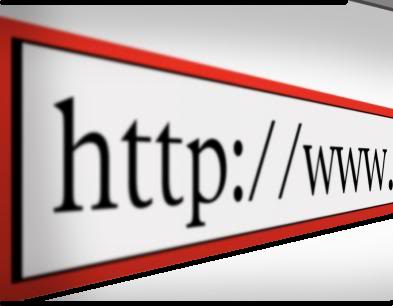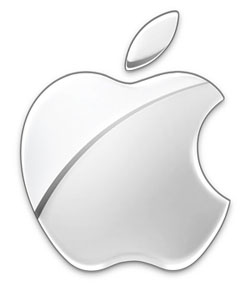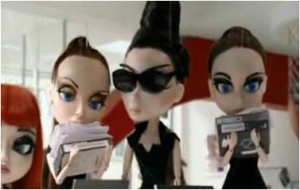Broadway, Rebranded
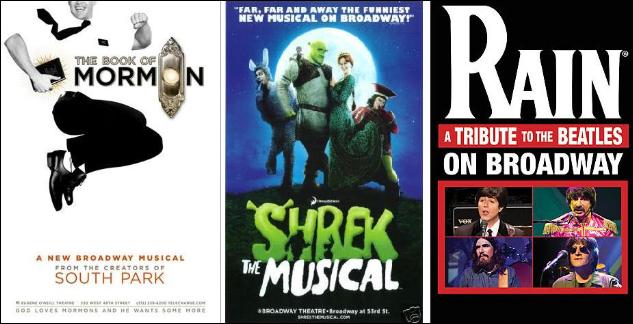
What's the first thing you think of when you hear the word "Broadway"? New York City, musicals, The Phantom of the Opera, theater, and Fred Astaire might come to mind. These associations most likely exist because of the way in which Broadway has traditionally been branded for years – as expensive, prestigious entertainment.
Lately, as seen at the Tony Awards last night, Broadway has been undergoing a branding transformation. Dramas and white-bread musical comedies make way for new shows that target children, minorities, and even those who enjoy raunchy religious mockery (look up The Book of Mormon, winner of Best Musical from the creators of South Park).
Even so, Broadway walks a thin line between experimental target audiences and the musical purists of days gone. Many newer consumers are often reluctant to see shows because of the limited availability and expense of tickets. That's why revivals of classics, like South Pacific and Gypsy, do well the second time around as older audiences remain steadfast in their support.
This puts Broadway at a complicated branding juncture. How can shows attract younger audiences with smaller wallets while still maintaining a reputation that's made them star attractions for years?
For one thing, the quality of shows remains relatively unchanged. Performers are still top-notch, often putting commercial pop-stars to shame (sorry, Justin Bieber). These actors, plus costume designers, technician crews, and so many others, go into the making of one high-quality product — much in the way that a designer handbag à la Gucci is created — instead of cheaply manufacturing several low-quality items at a time.
Instead, what seems to matter most in Broadway's rebranding is making shows accessible to everyone. Productions want the college undergraduate student or working suburban mom to see the latest show on tour in their hometown, not be intimidated by it. Maybe that's why newer shows are increasingly turning to audience interaction; The 25th Annual Putnam County Spelling Bee used audience members as spelling bee participants alongside cast members, and the revival of Hair invited audience members to dance onstage in a psychedelic encore of "Let the Sun Shine In." These experiences catapult audience members into the grandeur of the theater world, but in a way that is both comfortable and accepting for the participants.
Broadway is making progress on the road to rebranding; shows in the vein of Shrek the Musical and Rain: A Tribute to the Beatles are becoming more common, and overall show grosses have increased in recent years. In fact, Broadway theaters earned a cumulative $943 million between 2008 and 2009, the most ever in a single season. However, there's still a long way to go before seeing a show is as common as going to the movies.
Which leaves the question: could a rebranding of Broadway ever really make it accessible to broader audiences? And, more importantly, is that what's best for Broadway?
Contributed by Allison Meeks
Right-of-the-Dot Domains - What's it Worth to Your Brand?
No doubt anyone reading this blog is aware that nearly all websites (excluding institutions such as universities and government agencies) end in ".com." But, what you may not know is that in the coming weeks website names will change. The Internet Corporation for Assigned Names and Numbers ICANN – a non-profit for assigning domain names and IP addresses - announced it would create hundreds of new names for category domains that would include both generic spaces (i.e. ".beaches") and brand specific spaces (i.e. ".microsoft"). Technically named gTLD (generic top level domains) these new vanity domains can be more easily understood as "right of the dot domain."
There is going to be a lot of conversation and questions surrounding this move by ICANN in the coming weeks due to the potential headaches brands and companies will face in deciding if and how they will approach this new branding opportunity.
To give you an idea of how this announcement may potentially affect companies and brands we've listed out the Pros and Cons of the new "right of the dot domain" era.
Pros:
- More Controlled Brand Building on the Internet –With company and brand specific domains companies will have the opportunity to build a larger brand presence on the internet through these brand domains. As long as a company can prove they own the trademark to a name they will be granted the domain.
- Generic Domain Names are Fair Game - This could be highly beneficial for the lucky companies that snag these generic domains as they would then control all of content posted at those generic domains. For example, if Nike won the rights to host the domain ".sports" they would control any and all information at ".sports" putting them in a position to be the reigning authority to anything sports related
- Greater Brand Control - Similar to the point above, registering ."yourcompany" will give you control over anything at that domain – virtually eliminating all potential fraud or negative brand images.
Cons:
- Small Application Window – there will only be a 60 day open window for applications – after that it may be another 4-5 years before applications are accepted again
- One Brand Could Monopolize on Generic Spaces – though it can (and will be) viewed as pro for the few that can get the generic domain spaces like ".sports," for those who miss out will now potentially have their competitors controlling all content at such sites, which in turn may turn them in the industry thought leaders on a particular subject.
- A Brand has Hundreds of Brands Under their Umbrella – Some companies, such as Proctor & Gamble, own hundreds of brands; which brings the question where does such a company draw the gTLD line? Does P&G buy a domain for every product, or none at all? Securing gTLD's will not come cheap. So, how much is it worth to a company to have vanity domains for each of their brands? How much control do they really need/want on the Internet?
- A New Townhome or New Domain Name? - Filing cost is $185,000 per domain and an additional $25,000 in annual domain fees.
- The Application Closely Resembles a Short Novel – The ICANN application is a 150 page document that will be published in mid-June. After it is published there will only be a short time window to submit it.
The ".com" that we have all become accustomed to will more than likely continue to be the norm on the Internet, but it will be interesting to see how companies and brands use the new right-of-the-dot vanity URL to help build their brand's online presence.
What Is Your Branding Strategy?
CAUTION: Developing your own branding strategy may cause extreme frustration, which is hazardous to your health. Do not attempt unsupervised!
Maybe hazardous to your health is a slight exaggeration, but a branding strategy is something every brand needs. Successful brands are built on a foundation of meaningful strategy that provides the framework for a brand's meaning. Is your challenge creating a new brand? Merging brands? Or maybe refreshing your brand? Regardless of your branding challenge, our branding experts have created a list of key questions to ask yourself when developing your branding strategy...that is if you're still brave enough to go it alone.
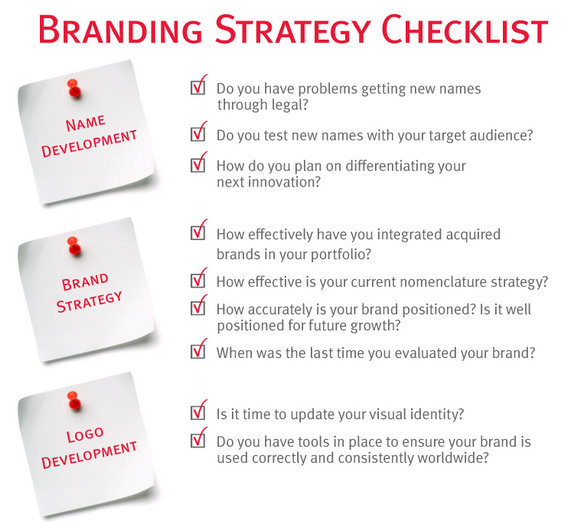
Do you think we missed something important? Share your own branding tips and questions
Lady Gaga: Branded this Way
Though she's been topping the charts with hits like "Bad Romance" and "Born this Way," Lady Gaga has claimed the #1 spot on a new list: The Forbes Celebrity 100. The 25-year-old pop sensation pushed Oprah to the #2 spot after earning $90 million in the last year. Oprah has been ranked No. 1 four times over the past seven years.
Whether you think she's a musical genius or a Madonna rip-off, you must admit that Lady Gaga has a strong personal brand. The mere mention of her name is instantly recognized by fans and critics alike. Lady Gaga has managed to be so successful and stand out from a slew of artists and singers by creating a personal brand that resonates with consumers. She embraces her strangest qualities and presents herself as the "Mother Monster" who is too fierce to let criticism bring her down.
And her numbers reflect this. Lady Gaga's concerts grossed $170 million and she sold an estimated 15 million albums worldwide. Her new album Born This Way hits stores later this month, but the title track is already the fastest-selling song in iTunes history, hitting one million downloads in just five days. And her "Little Monsters" (Lady Gaga fans) aren't the only ones with deep pockets. Lady Gaga's endorsement deals include Polaroid, Virgin Mobile, Monster Cable, Viva Glam, PlentyOfFish.com and a recent partnership with Starbucks.
Lady Gaga's brand is about embracing the outcasts who are teased, just like she was. Anyone who doesn't belong has a safe haven in Lady Gaga. She sings her personal story on stage, giving a voice to the socially disenfranchised. Lady Gaga knows her core values and plays to her strengths. She has created a unique personal brand that sets her apart from others in the music industry.
Lady Gaga made $200 million less than Oprah last year. What put her on the top was something money can’t buy: 32 million Facebook fans and over 10 million Twitter followers. Her social-media savvy is key to her success and building brand loyalty. Lady Gaga connects with her fans by tweeting all the time. It’s an important part of who she is and why she’s so famous. In the social media space, Lady Gaga trumps all celebrities, even Oprah with nearly 5.9 million Twitter followers.
With a strong personal brand, loyal fanbase and chart-topping social media presence, this monstrous brand is here to stay.
Happy Birthday Apple Stores!
A lot has changed since 2001. Back in yesteryear Mark Zuckerberg was not a household name, the word tweeting was the sound a bird made, and as of May 2001 Apple had yet to open any retail stores – the catalyst that helped Apple become the brand that it is today.
Today marks the 10th anniversary of Apple opening their first retail store in Tysons Corner, VA, a Washington, DC suburb. At the time many in the retail industry saw the move as risky, because "big box" technology stores had a stronghold on technology sales. Apple broke away from the norm with their stores by exclusively selling Apple products, instead of selling them alongside their competitors.
No doubt much of Apple's success has come from their innovative and industry changing products, but it is also impossible to ignore the fact that the brand's success has a lot to do with their brand image and seemingly flawless execution of brand standards.
Take a moment to think of each Apple store you've been in. It's hard to decipher which is which, and where each was located isn’t it? You can attribute that to the fact that Apple cuts no corners in controlling their retail environments. Each store has the same look and the same feel, when you step into an Apple store there is no second guessing your location. Isn't that something all brands desire to achieve, an all knowing awareness of their brand?
Whether its architectural design, package design, or product design, Apple uses a consistent brand image to maintain a familiarity amongst consumers, and in a world dominated by ever changing technology Apple's consistent design and image has no doubt helped the brand who was ranked as the world's 49th most valuable brand in 2001 skyrocket to the top of the list and land at #1 in May 2011.
So, Happy 10th Birthday Apple stores, I'm sure you'll have no problem getting friends to come to your birthday party.
Method to the Madness
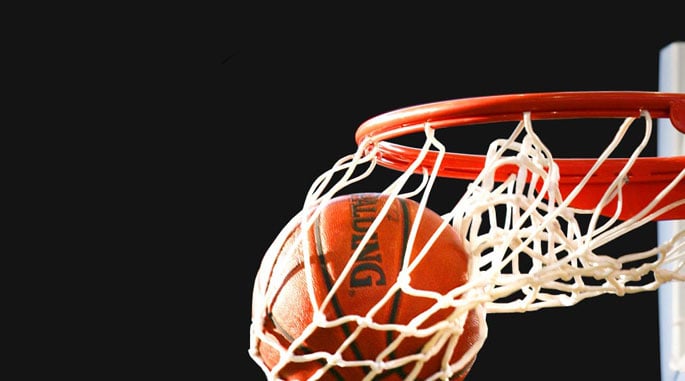
College basketball season might be over but for the NCAA, March Madness is just beginning.
Last October, the NCAA secured exclusive rights to the term "March Madness" from sports and entertainment marketer Intersport. Many in college athletics weren't even aware of the eight-figure settlement until USA TODAY reported the news in May.
According to USA TODAY, Intersport had retained usage rights to "March Madness" through an agreement with the Illinois High School Association in the early '90s. The IHSA and NCAA once shared the trademark. The IHSA gave up its ownership several years ago, but still kept use of the term in connection with high school basketball championships. However the NCAA considered any other use "detrimental to the trademark."
When asked if $17 million-plus may was too hefty a price tag, Randall Scott--Senior Vice President at Addison Whitney--questioned if an equally profitable alternative name even existed for the basketball tournament. "If you called it something else, would it have the same cachet and familiarity?" he asked.
USA TODAY reports that CBS and Turner are paying $10.8 billion over 14 years to carry the the Division I men's basketball tournament, making it NCAA's most critical source of income.
"Is it worth it?" Scott asked. "Absolutely. The real question is if $17 million was the right number."
Tag, You're It!

Facebook recently introduced a subtle change and for once it won't change the appearance of your news feed. Facebook introduced a new feature that allows users to identify people or objects that have their own Facebook Pages.
Previously, users could only tag their friends. Now users can tag celebrities or public figures they meet or tag the brands and products they use. For example, if I posted a photo of myself running in Nike sneakers, I could label the shoes with a tag that links to Nike's official Facebook Page.
For now, this tagging feature is limited to Pages for people or brands and products, although Facebook plans to expand these categories.
If it catches on, this new feature could be great for brands looking to go viral and spread awareness about their products. Companies will no doubt run contests, forcing participants to tag products. It is essentially free advertising on one the coolest and most popular websites today. At least for now.
The new tagging feature could also be an opportunity for Facebook to monetize the site's photo service, perhaps adding sponsored tags.
After all, nothing evokes fond family memories like that tagged bottle of soda in the background!
A Refreshing Taste
Coca-Cola is the most valuable brand in the world, and this month the company is celebrating its 125th birthday. Throughout its history Coca-Cola has extended its brand portfolio many times to include brands such as Coke Zero, Powerade, and Vitamin Water, but it was their original brand extension that has become nearly as strong and recognizable as the original brand itself. Yes, Diet Coke.
In 2011 Diet Coke surpassed Pepsi as the #2 soda in the U.S., and it was right behind, you guessed it, the original Coca-Cola. Having Diet Coke holding the #2 spot is more than a victory for the original Coca-Cola brand, but for the Diet Coke brand as well. It goes to show what most people have known for some time, that Diet Coke is no longer merely a brand extension of Coca-Cola, as it was when it launched in 1982, but a powerful brand on its own.
It was through a strong brand strategy from the start that propelled the brand to be the #3 soft drink in the U.S. by 1984, a spot it held until this year's move up in the ranks. For the majority of the brand's history it has been targeted to woman, originally by spotlighting fashionable woman and good looking men; and more recently by targeting the independent and working woman.
So, just for the fun of it, take a look at some of Diet Coke's most memorable commercials, starting with its very first that aired in 1983:
Addison Whitney On the Go
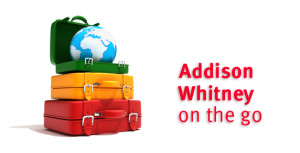
Addison Whitney team members are often on the road, visiting clients, attending conferences and meeting with partners, so we've asked our frequent flyers to send us photos from the road. Every Friday we'll post a new picture, and it will be up to our readers to guess where they were!
Can you guess where we were this week?

Submitted by Beth Anne McPheeters, Manager, Brand Strategy
Submit your guess by posting to comments, and we'll reveal the answer the following Friday. Now get guessing!
Insperity | What it Means to Their CEO
You may recall the posts in March about the Insperity launch. We did our best to sum up our engagement with the Administaff/ Insperity team, but it is a lot more exciting to hear about the transition directly from Insperity Chairman of the Board and CEO Paul Sarvadi. (He also happens to be one of the founders.) Take a look at the video below.

